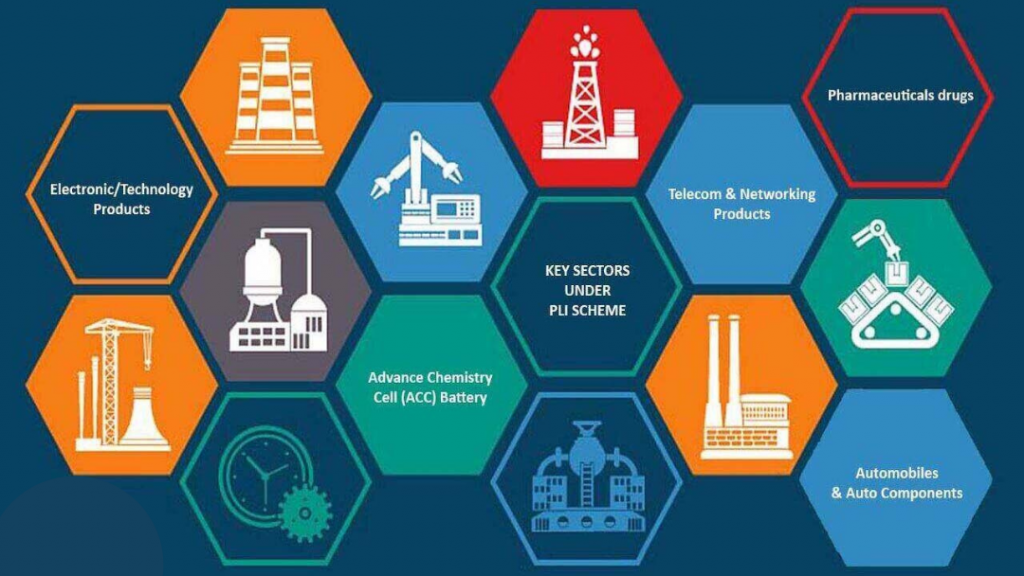ROLLOUT OF PLI- A boost to Indian Automobile Industry
The government of India on September 15 has introduced the Production Linked Incentive (PLI) scheme. Wangari Maathai, an environmental from Kenya in a talk show said that- “The Environment and Economy are really both two sides of the same coin. If we cannot sustain the environment, we cannot sustain ourselves.
In recent times, the automobile industry is identified as a cause for increasing pollution levels; causing serious health and environmental impacts. Powerful countries across the globe, including India, are under some serious pressure to monitor and control the rising population levels. And the governments of the different countries have sworn to bring down the emissions by 2030. In addition to these, the automobile industry has been severely hit by the coronavirus.
The automobile industry in India, which is said to be one of the key sectors that is simulating India’s economic growth for a very long period of time. The automobile industry in India is known for providing significant support to various other sectors; such as the agricultural sector, logistics, etc. Being one of the major contributors to the Indian Gross Domestic Product (GDP); providing employment and exports, the automobile industry is all set for its expansion. India can now be a prime destination for the expansion of the automobile industry.
In an attempt to make India a hub for green vehicles, and introduce new advanced automotive technologies; also with the promise to reduce the carbon footprint, the government of India on September 15 has introduced the Production Linked Incentive (PLI) scheme; which focuses on incentivizing the electric and hydrogen fuel cell vehicles.

Having a financial outlay of Rs 25,938 crores for the term of next five years for the auto sector; the scheme compromises of two main sub-schemes that is: the champion OEM Incentive for the original equipment manufacturers (OEMs); that will be busy manufacturing of battery electric vehicles; (BEV) AND Hydrogen Cell Vehicle (HFCV), and; the Component Champion Incentive Scheme (CCIS) for advanced automotive technology components which are used in two-wheelers, three-wheelers, passenger vehicles, etc.
To maximize all investments in the PLI scheme from existing and new non-automotive investors; participation is only for the fulfillment of certain eligibility criteria related to fresh investments; global group revenue, global group investment, and as well as global net worth. The turnover-based incentives which will vary around 13-to-16 percent under the COEM; will also give to ensure that the investors seek maximum benefits from the scheme. This is also along with an additional 5 % incentive for the domestic manufacturing of various components of the BEVs and the HFCVs.
The framework that is provided for the scheme by the Indian government; suggests that the government is looking forward towards introducing and promoting new-age advanced technologies. That will easily pave the way for the sustainable development of our environment. The Indian government has rolled out the scheme at a very apt time. As the automobile industry realigns its whole of the supply chain globally. Thus India can benefit from this changing scenario, and become an integral manufacturing base.
Though the new PLI scheme thrusts on incentivizing modern age technologies; the old traditional experienced market players are a little disappointed with the new scheme. As it fails to compensate for the loss of benefit for products; such as the heavy engine and the internal combustion engine.
The Indian government, despite the criticism from the traditional firms; the government is expecting the automobile industry will attract fresh and heavy investments of around 42.500 crores in a term of 5 years which will boost the additional production for more than Rs 2.3 lakh crore. Also will include multi-fold increase in production; the new scheme will also help the government in generating up to 800,000 job opportunities.
We have observed that all the leading economies in the world have focused on manufacturing and now they have become an integral part of the global value chain in most of the sectors. India which was more bend towards agricultural services is now pushing towards globalization to match peer country’s scale of employment and manufacturing. This scheme will help in contributing towards the growth of the countries GDP value and also give a much-needed boost to India’s aim of becoming a $5 trillion economy by 2025. The scheme would also support amplifying the demand and supply chain.
Surely the scheme looks promising and successful but the execution of the scheme would be a challenge to the Indian government as it requires more intent and investment, including a supportive infrastructure to support the new modern world scheme for the automobile industry. It would be very interesting to see, how the government implements this new scheme and also the outcome of it. We still have to wait to find out whether the government will focus on establishing the infrastructure on its own or under a Public-Private Partnership model.
Also Read: Flex Fuel Engines made Mandatory by Nitin Gadkari on AutoFlipz Blog page.
- Understanding Your Car Emergency Lights - October 14, 2021
- Tips For a Better and Cost Effective Car Maintenance - October 13, 2021
- CAR- THE DESTINATION OF ENTHUSIASM WITH CAR ACCESSORIES - October 13, 2021




